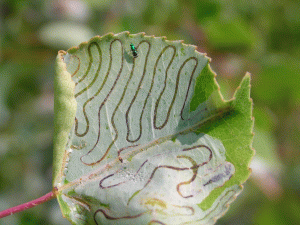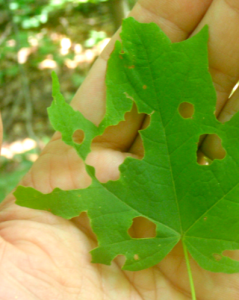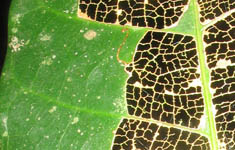Ecology week I – Leaf Herbivory and Fungal Occurrence on Trees – Spring 2022 Module – updates in progress for Fall, add in Sci Method & lab report format
Make new Fall & Summer page, keep Spring page separate
The In-Person and Make Up Module materials are the same this week. There is no Make Up Module webpage.
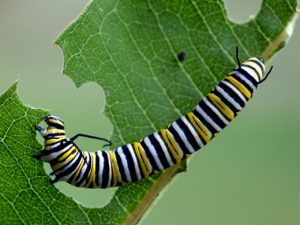
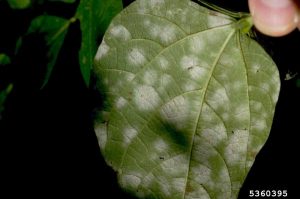
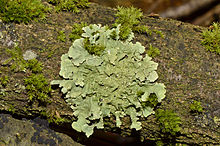
- Not final for Fall yet – do not proceed
Before going out in the field to collect data:
- Review the Field Work Safety Guidelines and plan accordingly.
- Read the Learning Objectives and Background information in your lab manual on pages 47-49. Then review the basic Sampling Methods for sampling and data collection on pages 50-51 #1-3. This will provide a basic understanding of what you will do out in the field. There are some modifications from what is in the lab manual and what you will do explained in the website for this Unit.
- Review Images of types of leaf herbivory, fungal infection and other tree associations (needed to complete types of Herbivory in the Data Collection Handout above).
Expanded Explanation of Sampling Methods:
All of your sampling should be non-destructive. Please do not pick the leaves you sampled.
- Before lab, you should have reviewed all the Methods in Ecological Methods: Field Sampling Techniques – Leaf Herbivory and Fungal Occurrence on Tree Species presented in the Post-Lab from the previous week (Unit 3). Since leaves are not yet out on trees in February, some of the Methods will be modified for the Spring semester, but reading the Methods is important to give you an idea of how leaves were selected and how to calculate leaf surface area and herbivory. (Print copy of Modified Methods).
- In the Summer or Fall Semesters – leaves and herbivores are available for sampling your own trees. Your TA will let you know if you should collect your OWN leaf samples using the Ecological Methods above in the Pre-Lab or if you will use the provided images below to collect data.
- If using the provided images….
- Bring your completed Spring Herbivory Data Collection Handout for the tree assigned to YOU within your lab group AND turn in on Moodle before the start of lab.
- Review Images of types of leaf herbivory, fungal infection and other tree associations (needed to complete types of Herbivory in the Data Collection Handout above).
- Make sure you have Excel or access to Google Sheets (students can download Microsoft Office 365 from NC State’s OIT software site for free!)
Depending on the semester, select the appropriate red button below to access the correct seasonal module. This will include a modified Data Collection Sheet and pertinent In-Lab and Post-Lab information.
- In the Summer or Fall Semesters – leaves and herbivores are available for sampling your own trees. Your TA will let you know if you should collect your OWN leaf samples using the Ecological Methods above in the Pre-Lab or if you will use the provided images below to collect data.
- Table 4.1.1. Photographs of Tree and Leaf Images. Each group of students will work on collecting data and calculating surface area data from all 4 of their assigned trees below.
|
Group 1 |
Group 2 |
| t Group 3 |
Group 4 |
|
Group 5 |
Group 6 |
- Analyze your data with your group members for all 4 trees studied by your table (Trees A, B, C and D). Look for trends, for example, do you see similar/different patterns in herbivory and/or fungal infections between different tree species?
- Compile the data (tables) on leaf surface area and area lost to herbivory and fungi if seen.
- Compile the data (images and observations) on types of herbivory and fungal incidences.
- Can data be combined, averaged or summarized for presentation? How?
- Does the origin of the tree species make a difference in the amount or types of herbivory or fungal damage? Why might this be a factor? What implications might this have on local insects or other wildlife?
- How would you best represent these data? You may need a combination of table(s) and/or graph(s) to represent all of the data and/or data summaries (Refer to Appendix E in your lab manual to help you, and see the LabWrite data resources)
- Be prepared to present your group findings and inferences to all of your lab peers by the end of lab.
Written Scientific Communication –update for Fall 2022
Students will be writing an Ecology Lab Report on one of the Ecology labs (Units 4.1 or 4.2). During these 2 Ecology Lab weeks, we will review the importance of good scientific writing skills and provide resources to aid in your success in writing for this class and your other science classes.
In-Lab Activity: provide paper handout for in class work
- Lab reports vs. journal articles/primary literature – activity/discussion
- Linking Scientific Method to format and order of Scientific Writing (Lab Reports/Journal Articles)
- Sample papers – primary or secondary – see links papers below if time.
- Update for Fall 2022
- Upload your completed group data representations and inferences. NOTE: Make sure to insert your tables, graphs, and/or any other images into a group Google doc/Google Sheet (you may also save it as a PDF) before you upload your completed group assignment in Moodle.
Laboratory Assignment – Field work required for next week’s lab.
There are a few parts to the Pre-Lab. To collect your own data, you will have to select the link for the Unit 4.2 –Urban Ecology and Field Methods webpage.
From Oct. 5, 2016 NCSU Bulletin – Urban Warming Slows Tree Growth, Photosynthesis – mentions increased insect pests are part of the problem.
Sample Scientific Papers – Primary vs. Secondary Literature
| Sample 1 -Mice(opens in new window) | Sample 2 -Rhinos(opens in new window) | Sample 3 -Iguana(opens in new window) | Sample 4 -Ecosystem(opens in new window) | Sample 5 -Parasites(opens in new window) |
Writing Lab Reports – Use when writing the Ecology Lab Report – Lab Units 4.1 and 4.2
This will be discussed further in lab next week (Lab 4.2).
- Inside-Out-Approach to writing lab reports
- LabWrite Home
- Guide to Analyzing Sections of a Lab Report
- Sample Lab Reports –look at formatting AND how references are used and cited.
- PPT that shows common mistakes with plagiarism
- PowerPoint from a Workshop on Writing Lab Reports
- (PPT tells you the basics, but also addresses common mistakes and questions from past students.)
- Writing tips for Scientific Writing (Active/Passive Voice, Wordiness, References, Pronouns, Tense Issues, Syntax)
- View a Sample Scientific Journal Article – Honey Bee Article
Finding and Citing References in your Lab Report
- Check out the Resources page on the main Lab homepage to help with writing in-text citations and full references.
- 8th Edition CSE Scientific Style and Format Citation Quick Guide
Additional help outside of the Biology Department and your TA
